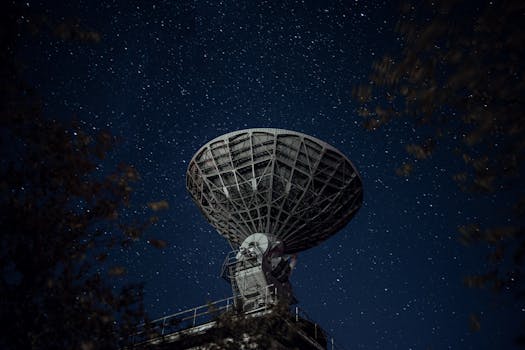
The Rise of Mega-Constellations: Latest Updates in Satellite Telecommunications
Mega-Constellations

The Rise of Mega-Constellations: Latest Updates in Satellite Telecommunications. Mega-constellations are a new generation of satellite systems that aim to provide global internet coverage by launching thousands of small satellites into low Earth orbit. These satellites are designed to work together to provide high-speed, low-latency internet connectivity to remote and underserved areas around the world. With the ability to provide internet access to billions of people, mega-constellations have the potential to revolutionize the way we communicate and access information.
One of the key benefits of mega-constellations is their ability to provide internet access to areas where traditional connectivity is limited or non-existent. This is particularly important for rural and remote communities, where access to the internet can be a major challenge. By providing a reliable and fast internet connection, mega-constellations can help to bridge the digital divide and provide new opportunities for education, healthcare, and economic development.
Latest Updates and Developments

In recent years, there have been several major developments in the field of mega-constellations. One of the most significant has been the launch of SpaceX’s Starlink constellation, which aims to provide global internet coverage by launching up to 42,000 satellites into low Earth orbit. Other companies, such as OneWeb and Amazon’s Kuiper Systems, are also working on their own mega-constellation projects, with the goal of providing fast and reliable internet access to people around the world.
Despite the many benefits of mega-constellations, there are also several challenges that need to be addressed. One of the main concerns is the potential for increased space debris, as the launch of thousands of new satellites increases the risk of collisions and other accidents in space. There are also concerns about the impact of mega-constellations on the night sky, as the sheer number of satellites could potentially interfere with astronomical observations and disrupt the natural environment.
Benefits and Challenges

The benefits of mega-constellations are numerous, and include the potential to provide global internet coverage, bridge the digital divide, and create new opportunities for economic development. However, there are also several challenges that need to be addressed, including the potential for increased space debris, the impact on the night sky, and the need for careful planning and regulation to ensure that these systems are developed and used responsibly.
Conclusion

In conclusion, the rise of mega-constellations is a significant development in the field of satellite telecommunications, with the potential to provide global internet coverage and bridge the digital divide. While there are several benefits to these systems, there are also challenges that need to be addressed, including the potential for increased space debris and the impact on the night sky. As the technology continues to evolve, it will be important to carefully consider these challenges and work to develop and use mega-constellations in a responsible and sustainable way.
See more:




